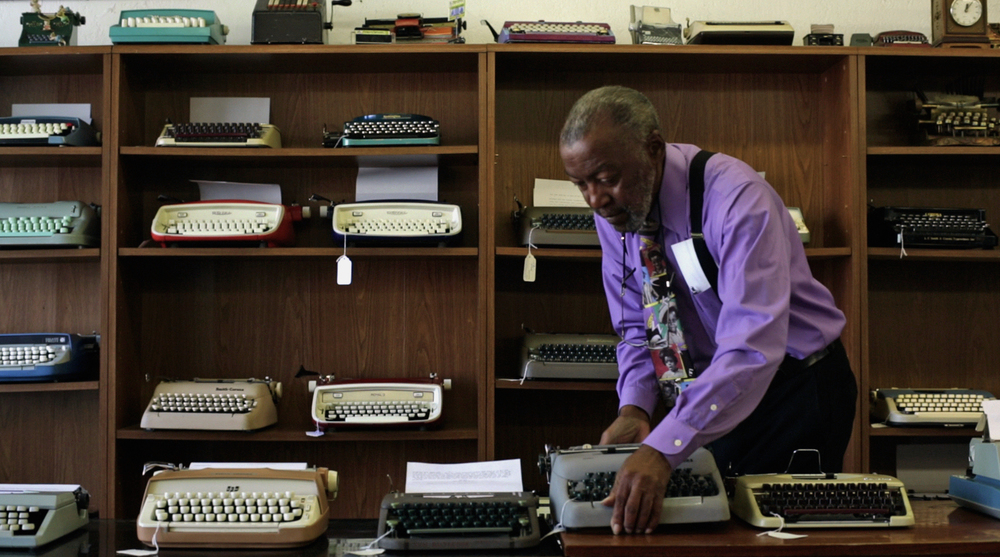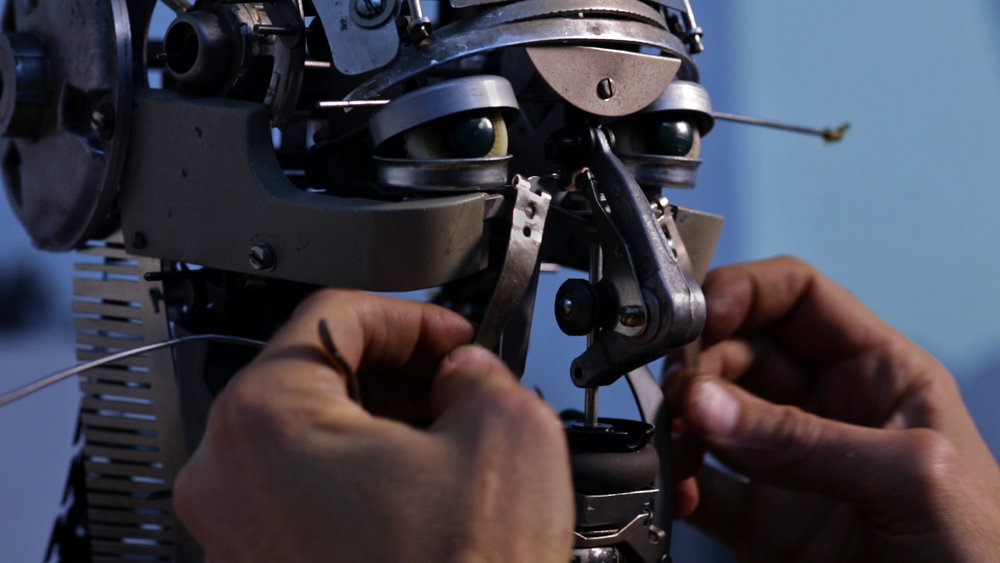
As was the case with Tom Hanks’s new typewriter-inspired short story collection, I was the easiest mark in the world for the new Doug Nichol documentary California Typewriter, which profiles the titular typewriter repair shop in Berkeley and the wider place of the typewriter in modern culture.
Though I’ve been anticipating the film for a while, I wasn’t sure what to expect. It turned out to be partially an adaptation of Richard Polt’s seminal The Typewriter Revolution and partially a meditation by figures famous and otherwise on the machine’s enduring value in the midst of its obsolescence. All together a collection of vignettes revolving around their common theme, the film works as a primer for the uninitiated as well as an adoring homage for the converted.
There are three main stories weaving throughout the film: the collector Martin Howard on a pilgrimage to snag an original 19th-century Sholes and Glidden, the California Typewriter shop struggling to survive in a defunct industry, and the artist Jeremy Mayer reusing parts from decommissioned typers to create some pretty incredible sculptures:

Together they neatly represent the past, present, and future of typewriters, but the shop narrative is the lynchpin. Owned by an African-American family for over 35 years, it’s now the most prominent representative of a dying breed. Even with the recent resurgence of interest, the decades of experience repairman Ken Alexander and his cohort have is a finite supply. And without high-quality typewriters being manufactured, that supply will only dwindle from here.
Still, notable typists have their reasons for sticking with typewriters. Tom Hanks has over 200 of them, many of which he gives away. (He names his favorites, two of which I own and share his opinion on.) David McCullough has been using the same hulking Royal Standard for over 50 years now in his drool-worthy writing cabin. (Against the conventional wisdom of modern gadgets, he says, “I don’t want to faster. I want to go slower.”) John Mayer got one in a bid for more permanence with his work and started writing lyrics with it. The late great Sam Shepard waxes eloquent about his Hermes 3000 and speaks to the benefits of its rituals, like how rolling in a new page is akin to saddling a horse for a job or journey.

The film is beautifully shot and edited by Nichol, whose eye as a commercial and music video cinematographer finds lots of lovingly framed images and scenes. A junkyard pile of cars that mirror the piles of discarded typers in Mayer’s studio. A reading of the Typewriter Insurgency Manifesto contrasted with footage of Apple fanatics lining up for the latest iDevice. But Nichol’s best decision was picking a subject that is already damn photogenic.
One collector mentions the typewriter subculture is almost exclusively men. Though technically inaccurate (for starters, typewriter poet-for-hire Silvi Alcivar is featured in the film, and there are the good people of Poems While You Wait) the film does insinuate a majority male enterprise given the people represented. This is a shame because many women are involved in the online community and at type-ins; and more broadly, the beautiful thing about the Revolution is that it’s a fully inclusive movement.
Typewriters are for everyone. Anyone can take up typing and for so many purposes, free from abstruse Terms & Conditions and free from the surveillance and proprietary influence that are built into digital technology. It’s a machine that is subservient to human will and not the other way around, whose sole function is to imprint letters on paper at the creative direction of the user.
In that way the typewriter truly is the People’s Machine. It’s your birthright, and it’s waiting for you. All you need is paper and ink—both of which are cheap and abundant—and desire to get started.

Reply